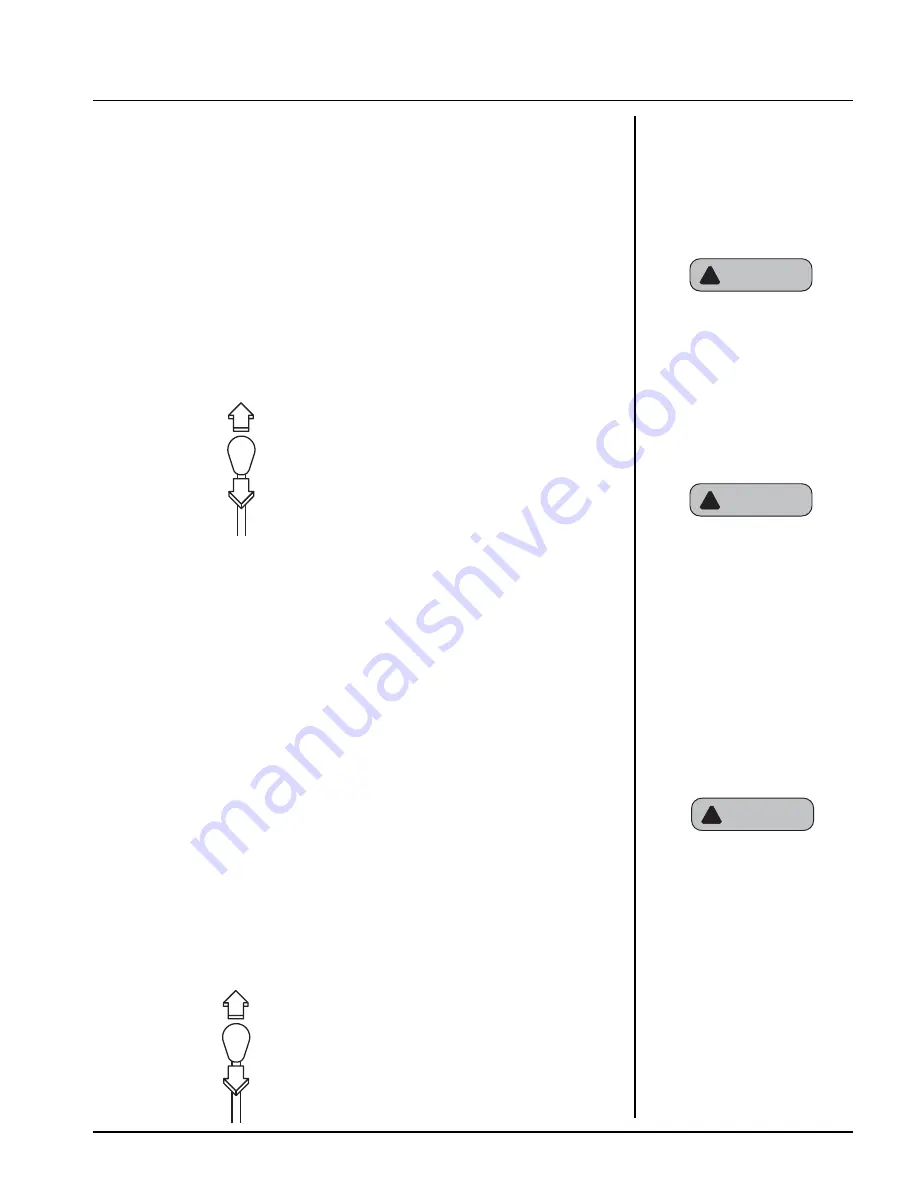
Form No. 20027 • G6-42P Owner/Operator Manual
• Align handler with face of stockpile and drive slowly and smoothly into pile to
load bucket. Do not corner-load bucket.
• Tilt bucket up far enough to retain load and back away from pile.
• Lower bucket to carry position (approximately one foot above ground) and
travel carefully to unloading point. Turn bucket down to dump load.
Mast (6' with 48" or 72" carriage)
Capacity:
Maximum lift capacity (indicated on attachment serial number plate) applies
only to certain areas within boom extension/elevation pattern of handler/mast
combination. A separate capacity chart must be used for handlers equipped
with mast. Study and understand this chart before attempting to handle a load
with mast attachment.
Attachment Tilt Controls:
Figure 14-3
The carriage tilt cylinder is used to tilt the
mast, and the carriage tilt lever controls
mast tilt. The auxiliary control lever is used
to raise and lower the forks in the mast.
Pull lever back to raise forks; push lever
forward to lower forks.
Installation Procedure:
1. Remove carriage/fork combination or other attachment from boom head.
See Page 14.1
2. Install mast on boom head.
3. Connect auxiliary hydraulic hoses to mast cylinder.
Operation:
• Always level handler before raising the boom or the forks, with or without a
load.
• To travel with a load, lower forks fully in mast and lower boom to position
load approximately one foot above ground.
• Use mast as required to increase vertical reach of handler.
• Use a signal person to assist in positioning the load if necessary.
Swing Forks
Capacity:
Maximum lift capacity for swing forks is shown on the attachment capacity
chart. However, maximum lift capacity applies only to certain areas within boom
extension/elevation pattern of handler/swing forks combination. A separate
capacity chart must be used for handlers equipped with swing forks. Study and
understand this chart before attempting to handle a load with swing forks
attachment.
Attachment Tilt Controls:
Figure 14-4
The carriage tilt cylinder is used to tilt the
swing forks up and down and the carriage
tilt lever controls fork tilt.
The auxiliary control lever is used to swing
the forks to the left and right. Pull lever
back to swing forks right; push lever
forward to swing forks left.
14.3
WARNING
!
PRECAUTIONS
• Read additional capacity
information under “Capacity”
heading.
• Because the mast increases
lift height, it is especially
important to level the handler
before lifting a load more than
four feet above ground.
See Page 12.0
WARNING
!
Do not handle a load with Mast
attachment until you study &
understand the “Mast Capacity
Chart”. If your handler does not
have a “Mast Capacity Chart”, ask
your supervisor to get one before
using the attachment.
WARNING
!
PRECAUTIONS
• Read & understand additional
capacity information under
“Capacity” heading.
• Always level forks
(horizontally) before swinging
load to side. Swinging
unleveled forks could result in
load slipping from forks.
• Because the swing forks can
swing the load to the side, it is
especially important that the
handler be level when
handling a load more than
four feet above ground.
See Page 12.0
AUXILIARY
CONTROL LEVER
SWING
LEFT
SWING
RIGHT
AUXILIARY
CONTROL LEVER
LOWER
FORKS
RAISE
FORKS



































